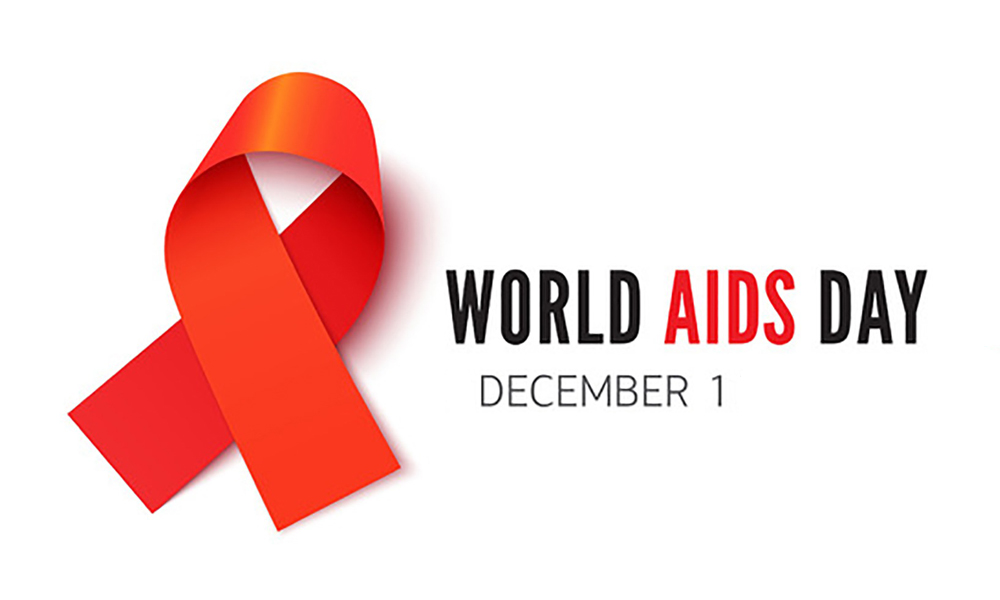World AIDS Day is an opportunity for people to come together worldwide (this year virtually) in order to fight against HIV and AIDS…
Each year, December 1 is observed as World AIDS Day in order to raise awareness and to unite people around the world in the global fight against AIDS. The day is also an important reminder to fight the stigma surrounding HIV and AIDS and focus on providing care and support for those who are already living with the disease.
The first case of HIV was reported in 1981 and since then the virus has killed more than 35 million people, making it one of the most deadly pandemics in human history. Today there are approximately 38 million people who are living with HIV.
HIV can be contacted through the transmission of bodily fluids. When a human contracts HIV (Human Immunodeficiency Virus), the become HIV positive, and unlike other viruses, this one never goes away. HIV attacks the immune system and if left untreated can lead to AIDS (Acquired Immune Deficiency Syndrome), leaving someone diagnosed with it vulnerable to other diseases. However, it is important to remember that HIV positive people can continue to live a healthy life without it reaching the final stage.
Since the 1990s, research and medical practices have made significant improvement for the care of people living with HIV. Like with most major public health issues, the HIV pandemic has only been presented with further challenges due to the Covid-19 pandemic. HIV prevention, testing and treatment have all taken a blow due to the lockdown and the breakdown of essential services during the coronavirus pandemic, which has taken priority.
History and significance
World AIDS Day was first designated in August 1988 by James W. Bunn and Thomas Netter, to get some semblance of control over the pandemic that had claimed the lives of so many people, especially from the LGBTQ community. Both James W. Bunn and Thomas Netter were public information officers for the AIDS Global Program of the World Health Organisation. They conveyed the idea for the observation of this day to the Director of the AIDS Global Program, Dr. Johnathan Mann, who approved it for December 1. It was the first ever international global health day.
The theme of the first World AIDS Day focused on children, to steer away from these stereotypes and discrimination and raise awareness of how HIV and AIDS affects families.
As World AIDS Day grew, its organisation was taken over by the Joint United Nations Programme on HIV/AIDS (UNAIDS) from 1996 and it became a year-round education campaign rather than a single awareness day.
Now, on December 1st each year, United Nations agencies, global governments and the public join together for the campaign, with awareness and fundraising efforts taking place all over the world. The reason? There is still a critical need for funds to support people living with HIV and AIDS, to raise awareness about what it’s like to live with the virus and to end the discrimination they face.
This year’s theme
Every year, World AIDS Day focuses on a different theme. Past themes have been “communities make the difference” in 2019, “know your status” in 2018, “my health, my right” in 2017 and “hands up for HIV prevention” in 2016.
Since 2008, the theme is chosen by the Global Steering Committee of the World AIDS Campaign (WAC). The themes are used year-round as a worldwide effort to call attention to the epidemic at major global events.
This year’s theme is: Ending the HIV/AIDS Epidemic: Resilience and Impact.
According to UNAIDS, the theme was decided as the coronavirus crisis has shown how health is linked with other issues, like inequality, human rights, social protection and economic growth.
The UNAIDS website explains: “We have seen how the COVID-19 crisis has exacerbated the challenges faced by people living with HIV, women and girls and key populations, including in accessing life-saving health care, and how the crisis has widened the social and economic inequalities that increase the vulnerability of marginalized groups to HIV.”
The pandemic has also highlighted the importance of community engagement and solidarity when it comes to supporting people living with HIV.
Show your support
You can show your solidarity with the millions of people affected by donating to a non-profit that works for HIV/AIDS awareness or by wearing a red ribbon to honour the millions of people who have been affected by the disease. (The red ribbon became an international symbol for the epidemic in 1991) On social media, the Centers for Disease and Control recommend using the following hashtags to spread awareness: #WorldAIDSDay, #WAD2020, #StopHIVTogether, and #EndHIVEpidemic.
RELATED:
– A Conversation With LetsStopAIDS Founder Shamin Mohamed Jr.
– Let’s Celebrate Progress This World AIDS Day
– 5 Films About HIV/AIDS You Should Watch At Least Once






POST A COMMENT